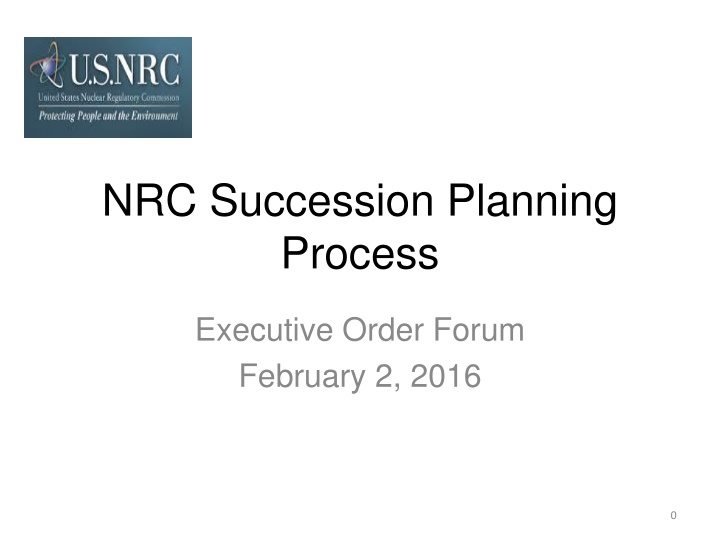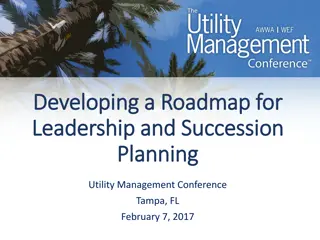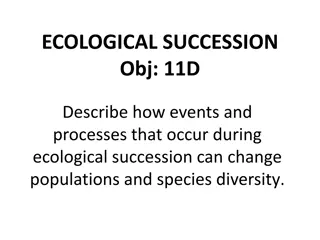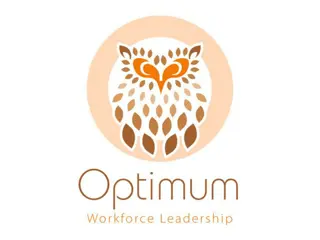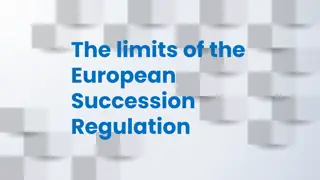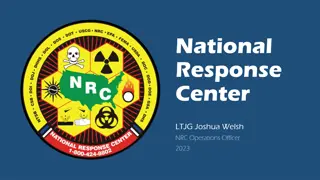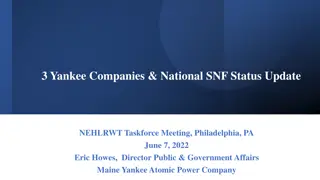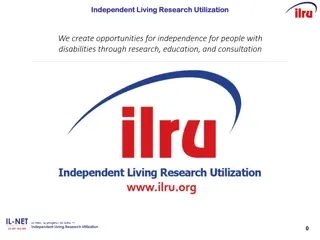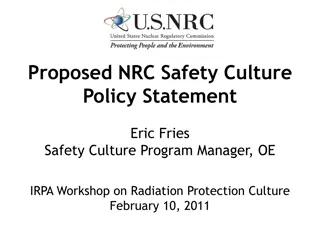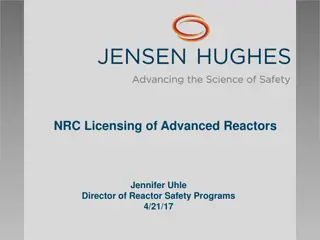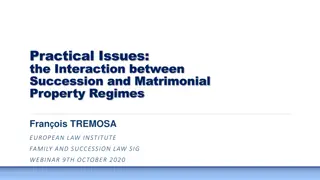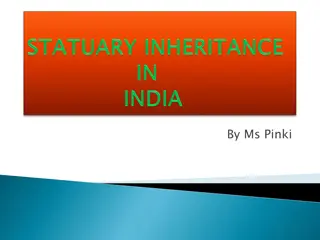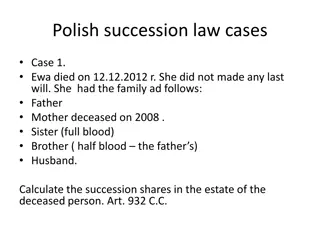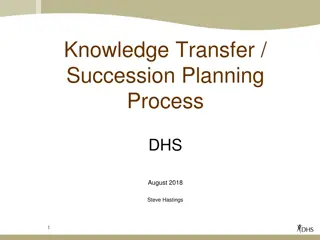NRC Succession Planning Process
This document provides an overview of the NRC's succession planning process, focusing on executive talent management, challenges faced, and strategies implemented to ensure a diverse pipeline of high-quality leaders within the organization. The importance of employee engagement, leadership competencies, and internal leadership growth is emphasized throughout.
Download Presentation

Please find below an Image/Link to download the presentation.
The content on the website is provided AS IS for your information and personal use only. It may not be sold, licensed, or shared on other websites without obtaining consent from the author.If you encounter any issues during the download, it is possible that the publisher has removed the file from their server.
You are allowed to download the files provided on this website for personal or commercial use, subject to the condition that they are used lawfully. All files are the property of their respective owners.
The content on the website is provided AS IS for your information and personal use only. It may not be sold, licensed, or shared on other websites without obtaining consent from the author.
E N D
Presentation Transcript
NRC Succession Planning Process Executive Order Forum February 2, 2016 0
Agenda NRC Executive Talent Management Overview Why Change? What Changed? Current Process Challenges and Lessons Learned How the Executive Resources Board uses the results 1
NRC Context NRC regulates the safe and secure civilian use of nuclear materials Technical credibility as a regulator requires engineers and scientists in most SES positions Employee engagement requires strong leadership competencies Almost all SES positions held by Career SES NRC grows most of its leaders from within 2
Executive Talent Management Ensuring NRC has a future pipeline of near and long term diverse, high quality leaders among most important senior leadership/ERB responsibilities NRC has conducted leadership succession management for many years, encompassing the spectrum of efforts to select and develop leaders. These include leadership development programs at all levels (e.g., supervisory curriculum, SESCDP) continued development of executives through assignments, rotations, training, coaching, etc. review of executive level successors, executives development needs, and analysis of future needs. strategies to fill executive positions (including vacancy announcements when appropriate) 3
Executive Talent Management Develop strategies to ensure a pipeline of near and long term diverse, high quality successors for executive positions Determine anticipated competencies and attributes for NRC executive positions Review strengths and needs of each executive and recommend continued development Use succession planning results in open manner to prepare EDPs and inform (not dictate) ERB staffing decisions 4
Executive Talent Management NRC had well established: Process for yearly assessment of NRC needs, bench strength, gaps, individual executives Executive assessment based on ERB perception of readiness to move to a higher level SES position Preferences for development, such as breadth of experience, e.g., in different disciplines, offices, geographic locations Next assignment = most common form of NRC executive development. Very few NRC executives remain in one position throughout their careers. Acting assignments, details, mentors, 360s and coaches also used extensively 5
NRC Leadership Succession Planning Process Selections for Executive Positions Establish or revalidate SES positions Solicitations of Interest Vacancy Announcements Direct reassignments Continuing Assessment of Competencies and Readiness Performance Management Succession Planning Meetings Input from executives 360 degree assessments Development Feedback from succession planning Next position assignments Exec. Development Plans Rotations, special initiatives, international programs Mentors & coaches Executives Leadership Seminars Leadership Pipeline Leadership Potential Program Supervisor and Team Leader Curricula SES Candidate Dev. Program
Why Change? Significant increase in executive turnover Agency preparing strategically for the future Increased Commission level interest ERB interest in continuous improvement Anticipated future environment 7
What Changed Identified exceptional leadership competencies Assessed exceptional leadership competencies to help identify potential and recommend development needs More input from senior leaders and executives Greater openness in dialogue with executives More creative executive development Increased willingness to consider nonlinear progression 8
Revised Process Obtain career interest data from executives Office director considers each subordinate executive: obtains informal input from colleagues and the executive for balanced perspective assesses each executive s proficiency in the exceptional leadership competencies recommends continued development ERB meets to discuss each executive, calibrate, collaborate on continued development recommendations Office director meets with each executive to share perceptions, recommendations for development, incorporate in EDP ERB considers results on an ongoing basis as it makes staffing and development decisions that benefit NRC and executives 9
Exceptional Leadership Competencies NRC identified the following as especially predictive of exceptional senior leadership (complete definitions in working draft) Strategic thinking and Vision External awareness Decisiveness (including technical credibility) Models NRC Principles of Good Regulation & Organizational Values Emotional Intelligence 10
Exceptional Leadership Competencies Close relation to ECQ and fundamental competencies Executives also expected to have other ECQ competencies Growth mindset - competencies not fixed; can be learned or improved Senior leaders may have different observations over time Different functions present different challenges certain competencies are needed more in some positions, even at lower levels, than in other positions Potential is judged based on demonstrated competencies and attributes but not necessarily positional requirements 11
Assessing Each Exceptional Leadership Competency Blank if insufficient basis to assess, or not proficient Proficient Proficient Above Level Proficient Well Above Level Note most important development recommendations Progression need not be linear. After no check in a specific competency one year, the executive may display proficiency above level or well above level the next year 12
Assessing Each Exceptional Leadership Competency Forward looking ( performance) Performance looks to accomplishments over past year compared to performance plan Succession planning looks at exceptional leadership competencies, potential to fill future needs Choose the most accurate proficiency level. Should demonstrate the full range described under the competency to be considered proficient Proficiency at current level or above level determined generically (e.g., for a division director, not the specific position held) 13
ERB Discussion The ERB at least annually: Reviews the assessment of each executive Collaborates to achieve common understanding and consistency in assessing executives Shares any additional data points to help provide feedback and continued development Assesses the agency needs, leadership pipeline, and strategies for addressing any gaps Collects lessons learned and continually improves the succession planning process 14
Feedback to Executives After the succession planning meeting, the office director meets with each executive to Lead constructive dialogue about the current assessment and basis for it, including the executive s perceptions of him/herself Focus on continued development Mutually develop or update the EDP This is not an exact science: the executive s development or further observations of the executive s proficiency may change the levels next time Emphasis on strengths, strategies, and development very few competencies are fixed 15
Challenges Going In Assessing based on overall, balanced, current observations Avoiding perception bias based on past experience Fostering a growth (rather than fixed) mindset - people can develop their competencies Providing candid and constructive feedback Weighing the results in day-to-day ERB deliberations Using an inexact process Focusing on development Keeping development expectations realistic 16
Lessons Learned The ERB implemented in 2015 and found: More meaningful discussion helps decision-making Better identifies potential and helps improve talent management generally More specificity in development strategy Focus on emotional intelligence and values important Considering process clarifications and a possible change to exceptional leadership competencies Continually improve process not finished 17
Use in Talent Management NRC s ERB: Remains large and inclusive Fills most SES positions through internal executive reassignments and selection of SESCDP graduates. Uses competitive announcement, transfer or reinstatement of career SES, etc. as appropriate Uses informal solicitations of interest for many internal selections but selects without soliciting when appropriate Makes staffing decisions throughout the year not at the yearly succession planning meeting 18
Use in Talent Management In deliberations about each selection, the ERB: Typically considers and discusses the results of succession planning (e.g., strategies to fill gaps, priorities for developing future senior leaders, specific development needs of individual executives, etc.) Weighs interests and development needs of executives along with program needs (e.g., specific technical qualifications or credibility sought, interest in fresh perspectives, need for reasonable stability, etc.) Strives to make selections that serve NRC and executives 19
